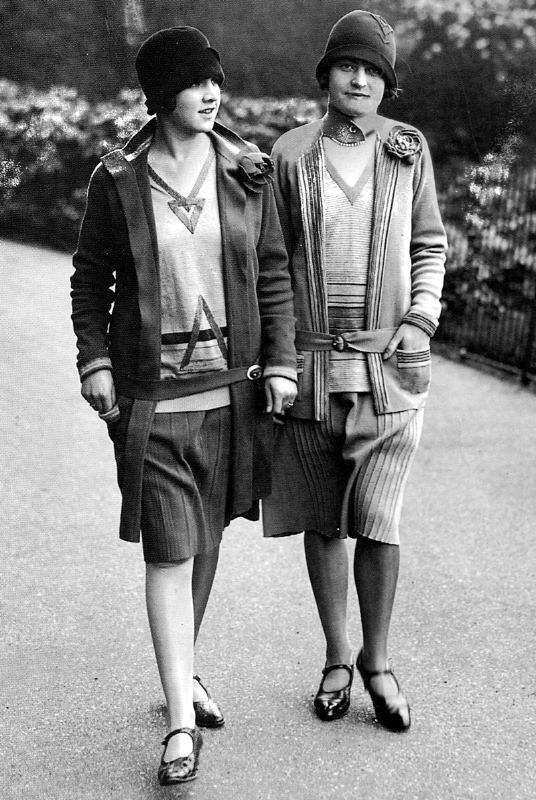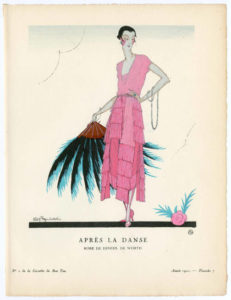We all know that fashion changes from decade to decade, adapting to circumstances, musical directions, and historical contexts.
Today, everyone has a different view of fashion. Some believe that fashion is dictated by big fashion houses and that famous people popularize it. In contrast, others think that everyone should have their own style and wear what they like and what feels comfortable, regardless of fashion trends.
Some of the clothing combinations from the past are still worn today.
What is common at all times is the aspiration of humans to always look beautiful and modern. Fashion loves innovations but also universal pieces of clothing that will later have historical value.
It’s a branch of industry that loves to make grand comebacks.
Both men and women followed the fashion. As fashion has changed, so have the standards of beauty for both sexes.
The beginning of the 20th century was a period of strong men who showed their abilities in the ring. Always tough and ready for anything, and on the other hand, gentle and real gentlemen.
The ideal of female beauty was completely changed during this period.
This marks a period when women have emancipated themselves and defied all social norms. They danced provocatively, smoked and drank, began to hide their breasts, and wear short bobs.
The aspiration was to equate with men.
The 1920s Fashion
Women
In this decade, the body’s athletic build (also known as the “boy’s build”) was considered attractive. It was characterized by broad shoulders, an undefined waist, long limbs, and small breasts.
Every piece of clothing in the 20s had a particular guideline on when to wear it. People had “rules” of what to wear in the morning, afternoon, and evening or dress for work or going out.

Clothes for work
Work clothes were usually neutral colors such as gray, dark brown, and blue. They tried to create clothes that would make as few fold marks as possible, so instead of cotton and linen, they preferred woolen, knitted, or solid cotton blends.
For business combinations, women who worked as teachers, telephone operators, journalists, secretaries, or the like, wore modest day dresses or three-piece sets.
Women who worked in sales and were in direct contact with people wore slightly elegant uniforms, made up from a shirt-dress with a white collar and heels.



Women who worked in factories or manufacturing plants had to wear special uniforms such as coat dresses.
The housewives’ attires were simple cotton dresses full of colors. They complemented dresses with beautiful embroidery and lace ornaments with pearl necklaces or colorful plaid. They sealed the look with black thick socks and oxfords on a low heel.
Travel clothes were the simplest for both men and women. They consisted of a comfortable suit, a hat, leather gloves, and a small leather luggage bag.
When going out, women wore dresses made of richer materials like satin and silk.
Dresses were most often adorned with lace lines to accentuate the waist, and the overall styling was complemented with elegant hats and satin gloves.
Sportswear consisted of knee-length wool pants, long high socks, sweaters, or blouses with a collar and coat on top. The upper parts were decorated with various geometric shapes and patterns.
As for the accessories, every style’s indispensable item was a “closet cap,” which had the shape of a helmet. It was barely decorated, most often on one side with geometric or floral motifs, often only satin ribbons. In the mid-1920s, turbans also became fashionable. Turbans had brooches and satin ribbons or were decorated with various zircons.
Jewelry and makeup
The jewelry was as simplistic as possible. The most common pearl necklaces would bath in the daylight, while in the evening, you could see brooches or pearl necklaces enriched with tassels. Short hairstyles that revealed the ears were in vogue, and the earrings were long and fringed.
Makeup was used only to emphasize beauty, not to cover imperfections. The face powder was applied in a darker shade and covered the whole face and open part of the neck. Another “musts” were blush that would highlight the cheeks and red matte lipstick, lighter for a daytime combination, darker for an evening out.
Men
In the first half of the 20s, men did not follow fashion extremely; they still wore suits from the beginning of the 20th century.
The suits’ colors were dark and dull, most often worn in navy blue, brown, olive green, and medium gray shades. The medium blue color has reached popularity in this decade because it was considered a turning point between the old and new fashion.


The suits were made of wool or very thick material, compared to today’s lighter.
The second half radiated change and innovation, and two new trends emerged in English and American fashion.
New trends in men fashion
In Britain, vests with 6-8 buttons and 2 slits for folding pockets for a watch have become popular. How popular they were shows the fact that men, in addition to wearing a wristwatch, also bought vests with a pocket watch. The look was completed with straight deep waist pants with suspenders. In addition to the suspenders, the larger men also adopted the American leather belt, combining it with the suspenders.
Americans liked a slightly more relaxed style, so strapless suits were worn, jackets were wider and somewhat waisted. The pants fell flat and were worn cinched with a leather belt.








As for accessories, in addition to belts and suspenders, a hat or beret was unavoidable. They were most often matched with suits.
The most influential fashion designers of the 1920s were Jeanne-Marie Lanvin, Jean Patou, Coco Chanel, and Charles Frederick Worth.
Influential Hollywood stars, besides Rudolph Valentino, were Charlie Chaplin and Douglas Fairbanks, Eva von Berne, Margaret Livingston, and Lillian Harvey.



0 Comments